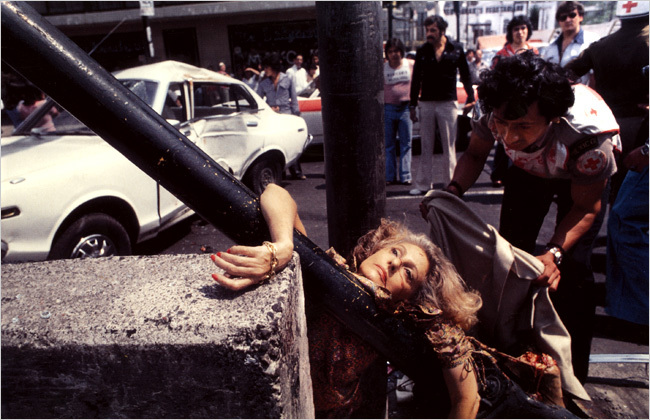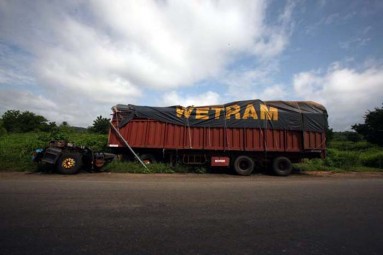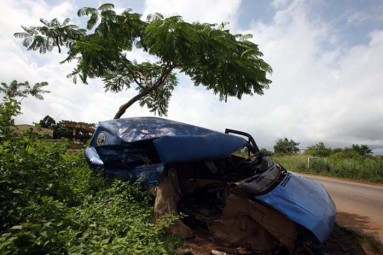I’m thinking of photographs that draw us into the dark star of the human predicament rather than into contemplation of some specific injustice.
Why do we photograph the aftermath of misadventure? Most of this catalog is unseen. The photos lie archived in the basements of police departments the world over. A few make it into newspapers. The photographs of suicides, wrecks and crashes taken by Enrique Metinides, Weegee’s Mexican descendant, satisfied a local hunger for scandal. Now they have migrated from the tabloids to gallery walls. Black and white can sometimes protect us. Color like Metinides’ is pepper in the eye.
But in color or otherwise, these are images that sidestep love. Their moral registration is off. The pictures don’t map onto what we wish to know about the world: they are unbearable but (are they?) necessary. In any case, we look, and look away, and look again.
Many other abject pictures are cognate to these: among Roger Fenton’s 1855 pictures of the Crimean War are those that show no dead bodies, that show only death’s hush. Similarly, only persecution’s traces remain in Tim Greyhavens’ recent photographic documentations of the places out West where Chinese-Americans were lynched or massacred. They are pictures of nothing, pictures of the void, and in them captions do most of the work.
In a book called Death Scenes: A Homicide Detective's Scrapbook, the captions do even more work: taken alone they are sufficient to strike the fear of God into the godless and to shake the faith of the believer:
“Children who played with dynamite.”
“Fifteen year-old boy suicide with gun.”
“Severely mutilated woman.”
“Husband looking at 74-year-old wife who was raped and murdered.”
After such captions, who needs pictures?
Just as troubling are the photographs taken between 1890 and 1910 in rural Wisconsin and collected in Wisconsin Death Trip. Whatever sheen of dignity adheres to pictures of war is missing here. These are photographs not merely of human cruelty but of human helplessness. They remind us (we do not wish to be reminded) that there will always be a minority of people whose luck is bad in the extreme. Sure, much of this “bad luck” is systemic, and is not strictly speaking only a matter of fate. But in the particular it rarely seems so, since many manage to evade its evil grasp. By some perverse logic, those who don't evade it seem sought out by it. Misadventure feels personal.
For a while in 2007 George Osodi stalked Nigerian roads, taking with him an actor dressed as the Devil. Together, they haunted the scenes of wrecks. The photos that emerged—straightforward color photos of the torqued hulks of crushed trucks and cars on the Lagos-Ibadan expressway, the Benin-Ore expressway and other carriageways of death—are like Metinides’, but with the sensation leached out. Metinides’ photos, taken minutes after, are nasty and exciting. Only the trace of sorrow remains in Osodi’s deadpan pictures. Bright blue sky, bright painted metal: they are as boring as death.
Looking at them I remember the people I loved who died in such circumstances. I remember telephone calls, the cracked voice at the other end of the line. I remember too how once, twice, I came close to such erasure myself, close to sacralizing some meaningless bend on the road.
Places are the fossils of events. They retain the memories of the terrors they’ve seen. A drive on a Nigerian highway is among other things a memorial service, a dirge of twisted metal under the sign of the iron god Ogun. Soyinka, decades before he was appointed the country's top road safety official (Nigeria is thick with such ironies), wrote:
Traveler, you must set out
At dawn. And wipe your feet upon
The dog-nose wetness of the earth.
The right foot for joy, the left, dread.
And the mother prayed: Child,
May you never walk
Where the road waits, famished.
Photographs of fate’s aftermath protest this world of famished roads. They insist that it is the world that is wicked, not the photos of it. Such photos work as surveillance pictures, keeping disinterested track of the past’s future.


